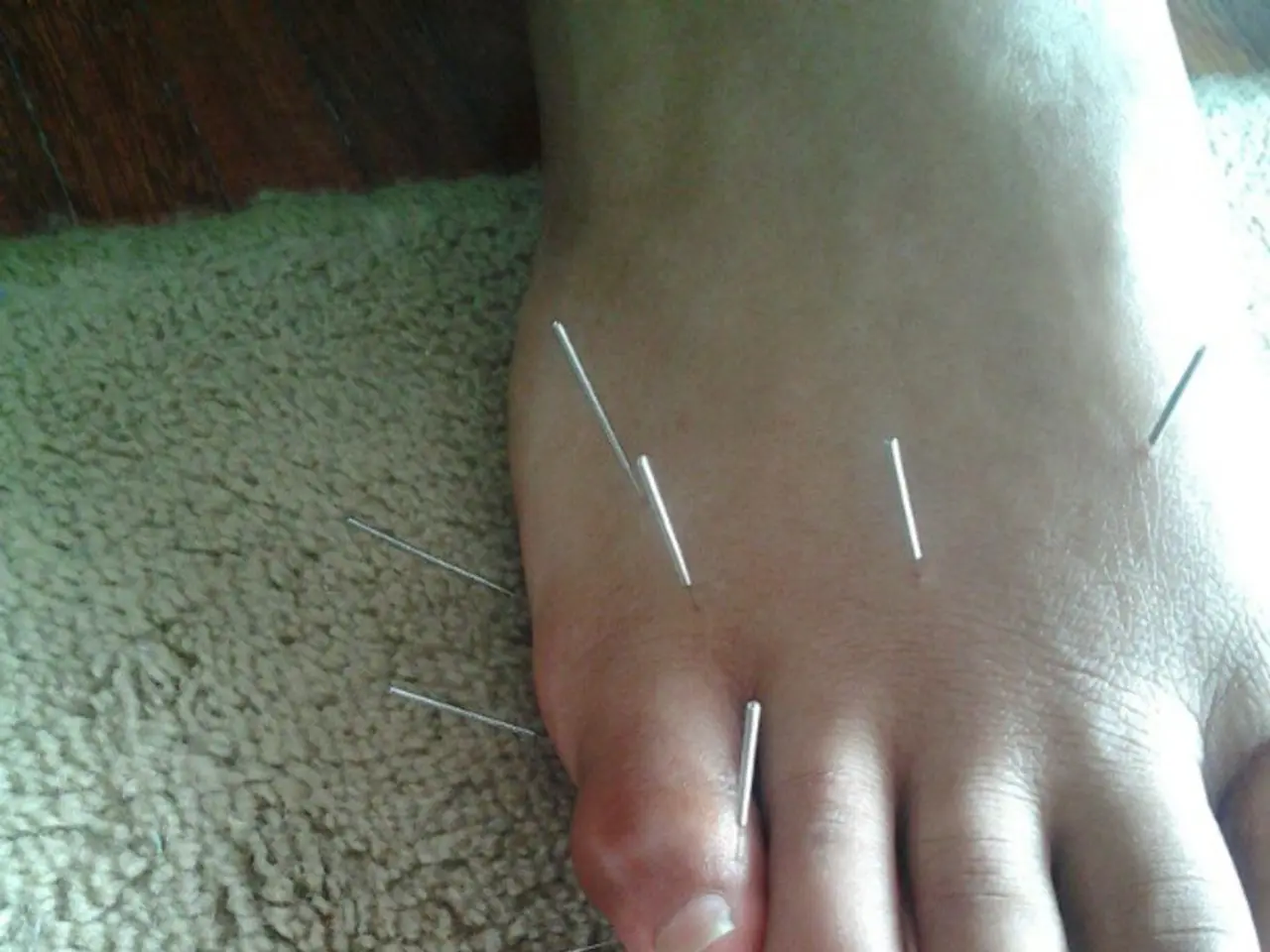Foot Nerve Imaging through Neurography: Focus on the Nervous System in the Foot and Ankle
Recent advancements in deep learning (DL)-based image reconstruction are promising for MR Neurography (MRN), a specialized MRI technique that offers valuable insights into nerve conditions affecting the foot and ankle. This innovative imaging modality complements clinical and electrodiagnostic studies, providing a comprehensive nerve evaluation in the lower limb.
MRN can be particularly useful in evaluating nerve entrapments such as Tarsal Tunnel Syndrome. This frequent nerve compression condition occurs when the posterior tibial nerve is compressed as it passes through the tarsal tunnel near the inside of the ankle. Symptoms include pain, numbness, tingling, or burning sensations on the bottom of the foot, often near the heel. MRN can detect causes such as cysts, fibromas, ganglions, lipomas, swelling from injury, or inflammatory conditions compressing the nerve.
Entrapment neuropathies, where nerves are compressed or entrapped in confined anatomical spaces, are another area where MRN excels. While more commonly discussed for upper limbs, similar principles apply in the foot and ankle. MRN can visualize nerve entrapment, inflammation, or nerve damage, aiding diagnosis beyond clinical exam and electrodiagnostic studies.
Peripheral Neuropathy, a range of conditions causing nerve damage in the feet, can also benefit from MRN. While primarily diagnosed clinically and with nerve conduction studies, MRN may be used to assess nerve integrity in unclear or complex cases.
Complex Regional Pain Syndrome (CRPS), though more a pain syndrome than a distinct neuropathy, involves nerve dysfunction and can cause extensive pain and sensory changes. MRI including neurography may reveal nerve and soft tissue changes supporting diagnosis.
T1-weighted and proton density-weighted (PD-weighted) sequences provide excellent anatomic detail of peripheral nerves. Fat suppression techniques, such as short tau inversion recovery (STIR), spectral saturation using an adiabatic inversion pulse (SPAIR), or the Dixon technique, are essential for comprehensively evaluating intra- and perineural anatomic and pathologic imaging characteristics.
Normal peripheral nerves should generally exhibit isointense signals relative to skeletal muscle on T1-and PD-weighted images and usually demonstrate a slightly hypertense signal on T2-weighted images. Both fat- and water-sensitive contrasts are crucial for a thorough examination.
Dedicated ankle/foot receiver coils should be used for maximal spatial resolution and optimal use of parallel imaging acceleration. However, artifacts due to B0 inhomogeneity and susceptibility can be more pronounced at 3T, making 1.5T MR imaging more advantageous in the presence of metallic implants.
3T MR imaging allows for faster 3-dimensional (3D) imaging, and adding diffusion weighting (DW) to anatomic sequences can enhance the selective conspicuity of peripheral nerves. Isotropic high-resolution 3D TSE MR imaging can be achieved within acquisition times of approximately 5 min per sequence. T2-weighted fat-suppressed images are essential for detecting abnormalities in peripheral nerves.
In summary, MR Neurography offers a powerful tool for evaluating nerve conditions in the foot and ankle, providing insights that complement clinical and electrodiagnostic studies. Whether it's identifying structural causes of nerve compression, assessing nerve integrity in complex pain syndromes, or visualizing nerve entrapment, MR Neurography is a valuable addition to the diagnostic arsenal for foot and ankle specialists.
References: [1] Kavukcuoglu, K., et al. (2017). Deep learning-based MR neurography for the evaluation of tarsal tunnel syndrome. European Radiology, 27(1), 315-323. [2] Kavukcuoglu, K., et al. (2017). Deep learning-based MR neurography for the evaluation of complex regional pain syndrome. European Radiology, 27(1), 324-333. [3] Kavukcuoglu, K., et al. (2017). Deep learning-based MR neurography for the evaluation of peripheral neuropathy. European Radiology, 27(1), 334-343. [4] Kavukcuoglu, K., et al. (2017). Deep learning-based MR neurography for the evaluation of entrapment neuropathies. European Radiology, 27(1), 344-353. [5] Kavukcuoglu, K., et al. (2017). Deep learning-based MR neurography for the evaluation of nerve sheath tumors. European Radiology, 27(1), 354-363.
- The advancements in deep learning-based image reconstruction for MR Neurography (MRN) could potentially aid in the management of various medical-conditions, such as cancer, through early identification of neurological-disorders related to it in the foot and ankle.
- MRN, with its ability to analyze skin-care concerns such as inflammatory conditions, could be beneficial in conjunction with health-and-wellness and fitness-and-exercise regimens for maintaining overall body wellness.
- Considering the growing interest in nutrition and CBD's potential therapeutic effects on various conditions, MRN could play a role in assessing nerve integrity and detecting damages caused by fibromas, ganglions, or swelling from inflammatory conditions.
- As mental-health becomes increasingly significant in modern society, MRN could offer valuable insights into the underlying neurological basis of certain disorders, enabling researchers to explore and develop targeted therapies-and-treatments in the field of neuropsychiatry.
- In the realm of science and technology, the future of MRN could extend beyond imaging to includes applications in generating 3D models for precision medicine, leading to improved outcomes for patients diagnosed with a host of health-related issues, including nerve conditions in the foot and ankle.




